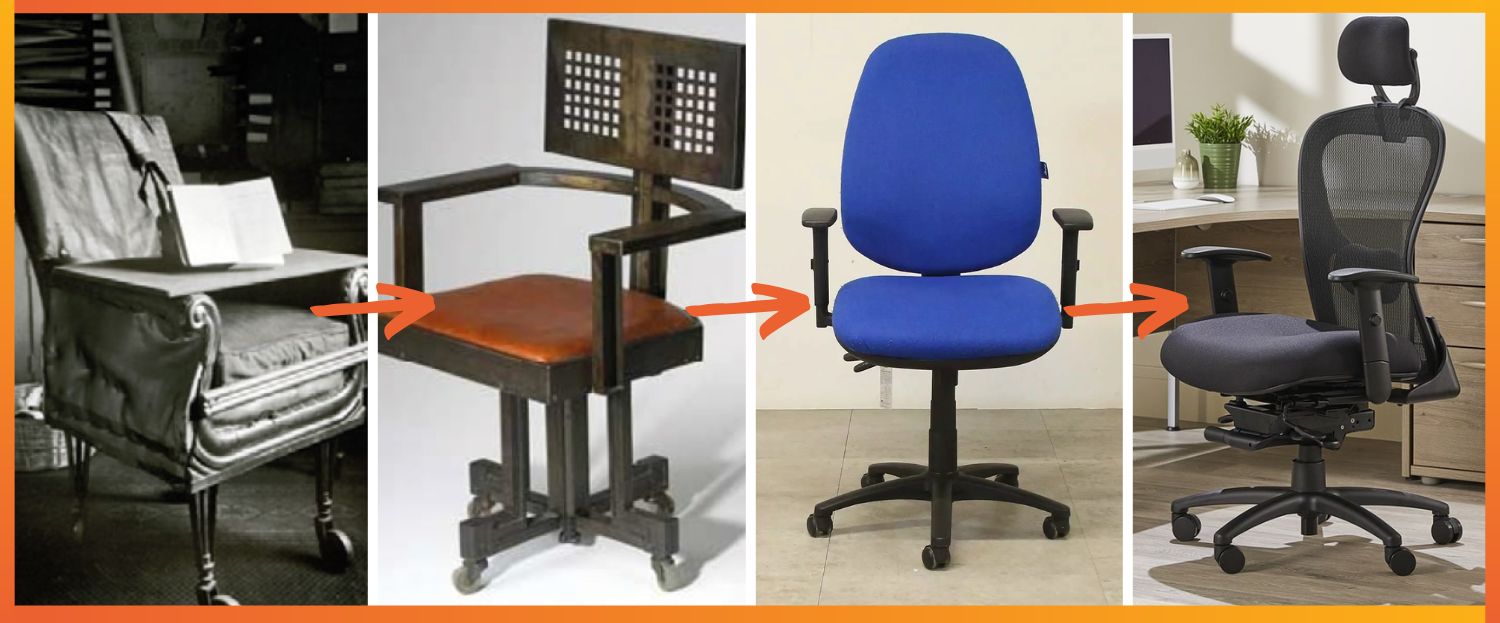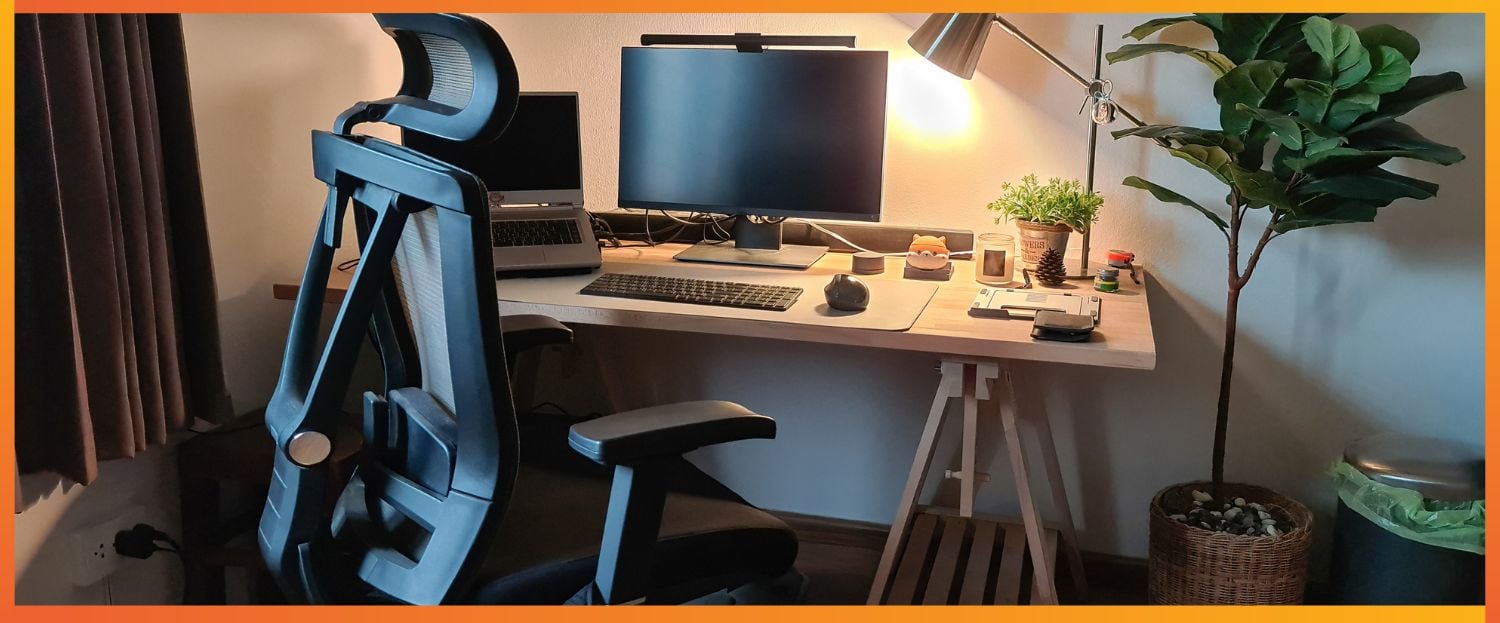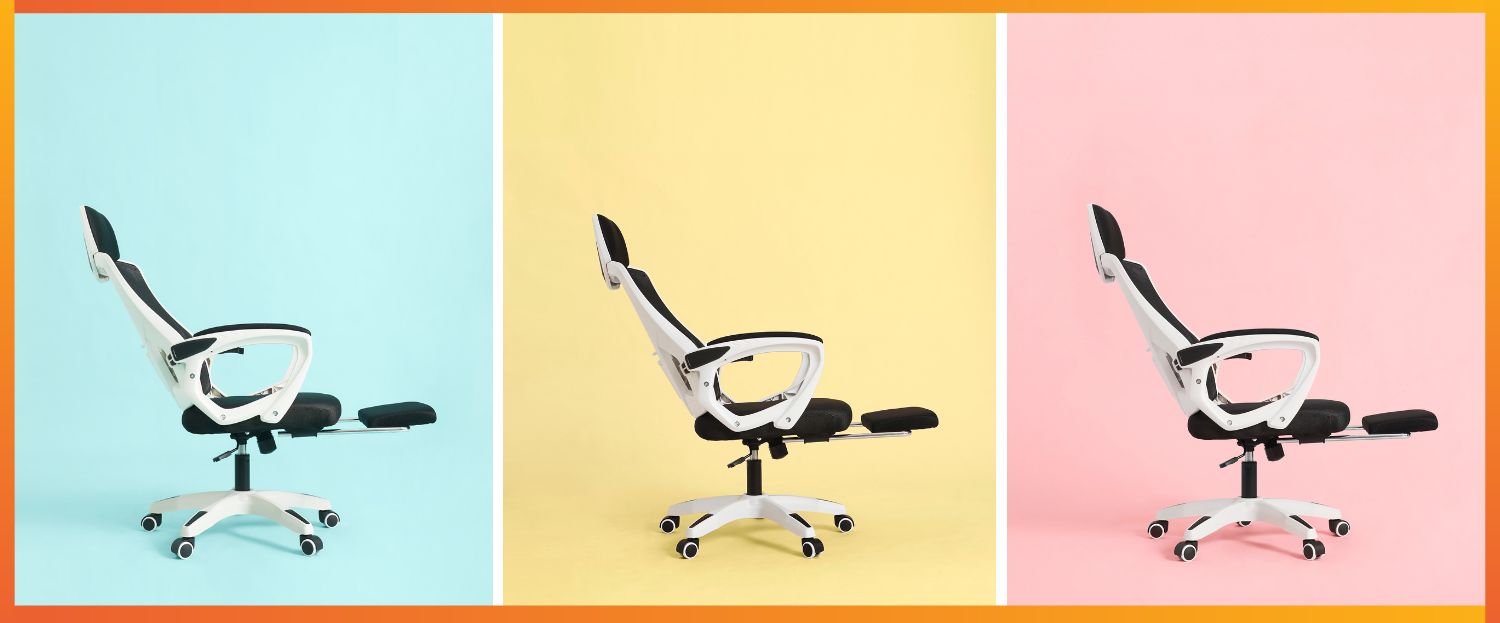History of The Office Chair: Who Actually Invented It?
Office chairs - those trusty companions of productivity - have come a long way from rudimentary wooden stools to today’s high-tech ergonomic marvels. The evolution of office seating has not only shaped workplace efficiency but also impacted health and well-being.
Let’s take a deep dive into their fascinating history.
The Origins of Office Seating

Ancient and Medieval Seating Solutions
Before the invention of the modern office, ancient civilisations relied on simple seating solutions. The Egyptians, Greeks, and Romans predominantly used stools and benches for work, with little regard for comfort. High-backed thrones, often adorned with intricate carvings, were reserved for rulers and high-ranking officials, signifying status rather than practicality. In medieval times, scholars and scribes worked at desks with rudimentary seating arrangements, far from the ergonomic designs we have today.
The Birth of the Office Chair (18th - 19th Century)
Early Workplace Seating During the Industrial Revolution
As businesses expanded and administrative roles increased during the Industrial Revolution, the need for more practical office seating emerged. Wooden chairs with armrests became more common in workplaces, providing basic support for clerks and managers alike.
Thomas Jefferson’s Swivel Chair
Thomas Jefferson, a Founding Father of the United States, is credited with inventing the first swivel chair in the late 18th century. His rotating chair allowed him to move between documents with ease, embodying the first step toward the dynamic office chairs of today.
Charles Darwin’s Wheeled Chair and Its Influence
It may surprise you that Charles Darwin played a pivotal role in office chair history! In the 1840s, he modified a standard chair by adding wheels to move around his study more efficiently—an idea that paved the way for modern swivel chairs.
The Rise of Mass-Produced Office Furniture
By the late 19th century, mass production revolutionised office furniture. Companies began creating office chairs with padded seats, curved backs, and even rudimentary reclining mechanisms, making long hours at the desk slightly more bearable.
The 20th Century: Functionality Meets Design

The Introduction of Adjustable and Ergonomic Chairs
The 20th century saw a significant shift in chair design, with a greater emphasis on ergonomics. The 1920s and 1930s introduced chairs with adjustable height and backrests, helping to reduce workplace fatigue.
The Influence of Bauhaus and Modernist Movements
The Bauhaus movement in the 1920s played a crucial role in shaping office chair aesthetics. The focus on minimalist, functional designs led to sleeker, more practical office furniture.
The Emergence of Task Chairs for Typists and Clerical Work
With the rise of office-based jobs, manufacturers designed task chairs specifically for typists and clerical workers. These chairs featured cushioned seats, adjustable armrests, and increased lumbar support to improve comfort and productivity.
The First Mass-Produced Ergonomic Chairs
The latter half of the 20th century saw the introduction of renowned brands like Herman Miller and Steelcase, pioneering ergonomic chair design. The launch of the Herman Miller Ergon Chair in 1976 marked a turning point, setting new standards for office seating.
The Rise of Ergonomics (Late 20th Century - Early 21st Century)

Increasing Awareness of Workplace Health and Posture
By the 1980s and 1990s, studies highlighting the impact of poor posture on worker health led to a surge in ergonomic innovations. Adjustable lumbar support, seat tilt mechanisms, and breathable mesh backs became essential features.
The Aeron Chair and Its Impact
Herman Miller’s Aeron Chair, released in 1994, became a game-changer. Designed with cutting-edge ergonomic features, including a mesh back for improved airflow, it quickly became an office staple.
The Introduction of 24-Hour Chairs for Call Centres
Recognising the demands of high-use environments, manufacturers developed 24-hour chairs for call centres and control rooms, ensuring durability and comfort for long shifts.
The Office Chair Today: A Fusion of Comfort and Technology

Smart Chairs: AI-Driven Posture Correction and Adjustability
Today’s office chairs are smarter than ever, integrating AI-driven adjustments that encourage better posture and prevent strain-related injuries. Some high-end models now feature sensors that monitor user sitting habits, providing real-time feedback and recommendations to improve posture and reduce discomfort. These advancements allow users to personalise their seating experience and maintain proper spinal alignment throughout the workday.
Sustainable Materials and Eco-Friendly Manufacturing
With sustainability at the forefront, many office chair manufacturers now use recycled materials and eco-friendly production processes. Some modern chairs are crafted from recycled plastics, sustainable fabrics, and responsibly sourced wood.
Additionally, companies are investing in carbon-neutral production methods and modular designs, enabling easier repairs and replacements, reducing waste, and extending product life cycles.
Standing Desks and Hybrid Seating Solutions
As the popularity of standing desks rises, office chairs have adapted with hybrid designs that accommodate both sitting and standing workstations. Perch stools and sit-stand chairs offer dynamic support, encouraging movement and reducing prolonged sitting.
Studies have shown that alternating between sitting and standing throughout the workday can improve circulation, reduce fatigue, and enhance productivity. Many modern office chairs now include height-adjustable features to complement standing desks, allowing for seamless transitions between working positions.
Customisation and Design Aesthetics in Modern Offices
From colour choices (such as red and green office chairs) to personalised settings, office chairs are now as much about style as they are about function. Many office chairs offer customisable fabrics, armrests, and lumbar support settings, allowing users to tailor their chairs to both their ergonomic needs and office décor.
The rise of remote work has also led to a demand for aesthetically pleasing home office chairs that blend functionality with home-friendly designs, ensuring both comfort and visual appeal.
The Future of Office Seating

The Impact of Remote Work and Home Office Setups
The shift to remote work has dramatically altered office chair demands, with individuals now prioritising high-quality home office solutions. This change has driven an increase in demand for chairs that offer superior lumbar support, multi-functional adjustability, and compact designs suitable for smaller home office spaces.
Research suggests that improper home office setups can lead to musculoskeletal issues, making ergonomically designed chairs more essential than ever.
Emerging Trends: Flexible Workspaces and Adaptable Furniture
Companies are shifting towards more dynamic office layouts, incorporating seating solutions that promote movement and adaptability. Modular seating arrangements, hot-desking setups, and shared workstations have led to a rise in versatile chairs that can easily be reconfigured.
Additionally, there is a growing demand for chairs with self-adjusting ergonomic features that automatically conform to the user’s weight and posture, reducing the need for manual adjustments.
Biomechanics and AI-Driven Personalisation
The next wave of office chairs is expected to incorporate biomechanics and AI technology to create a more personalised seating experience. These smart chairs could use embedded sensors to track sitting habits, detect poor posture, and provide real-time feedback to encourage healthier seating positions.
Some models may even connect to apps or smart home systems, offering tailored suggestions to reduce strain and improve productivity. Studies have already indicated that poor posture can decrease work efficiency, and AI-driven solutions could provide real-time corrective measures to combat this issue.
Predictions for Office Chairs in the Next Decade
Looking ahead, office chairs are likely to integrate more advanced materials, such as self-healing upholstery and temperature-regulating fabrics that enhance comfort. We may also see an increase in environmentally sustainable innovations, including chairs made from 100% biodegradable or recycled materials.
Additionally, the rise of virtual and augmented reality workspaces could lead to chairs designed for immersive digital environments, complete with motion-support features for extended VR use. From posture-tracking mechanisms to fully adjustable, energy-efficient designs, the next decade promises to redefine what we expect from office seating.
Final Thoughts
The humble office chair has undergone an incredible transformation—from the rudimentary stools of ancient times to today’s AI-enhanced ergonomic seating. As workplaces continue to evolve, so too will office chairs, integrating cutting-edge technology, sustainability, and personalised comfort.
With a growing focus on health and well-being, the next generation of office seating will aim to enhance productivity while ensuring long-term support for workers in diverse environments. Whether in corporate offices, home workspaces, or hybrid settings, the office chair will remain a vital tool for maintaining efficiency and comfort in the ever-changing world of work.




